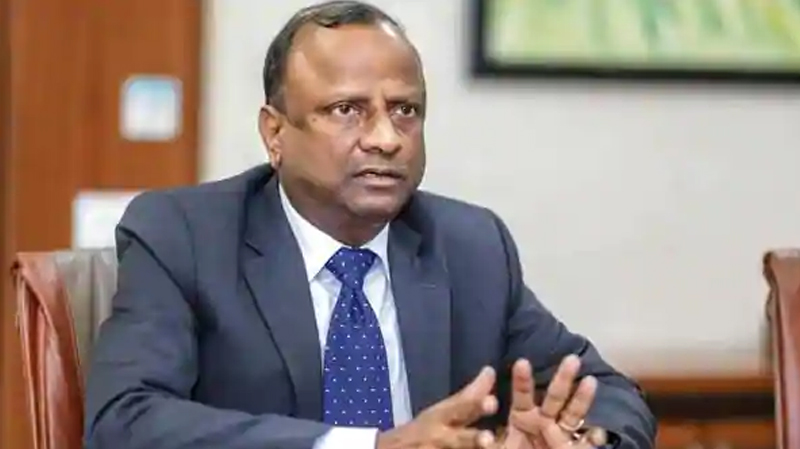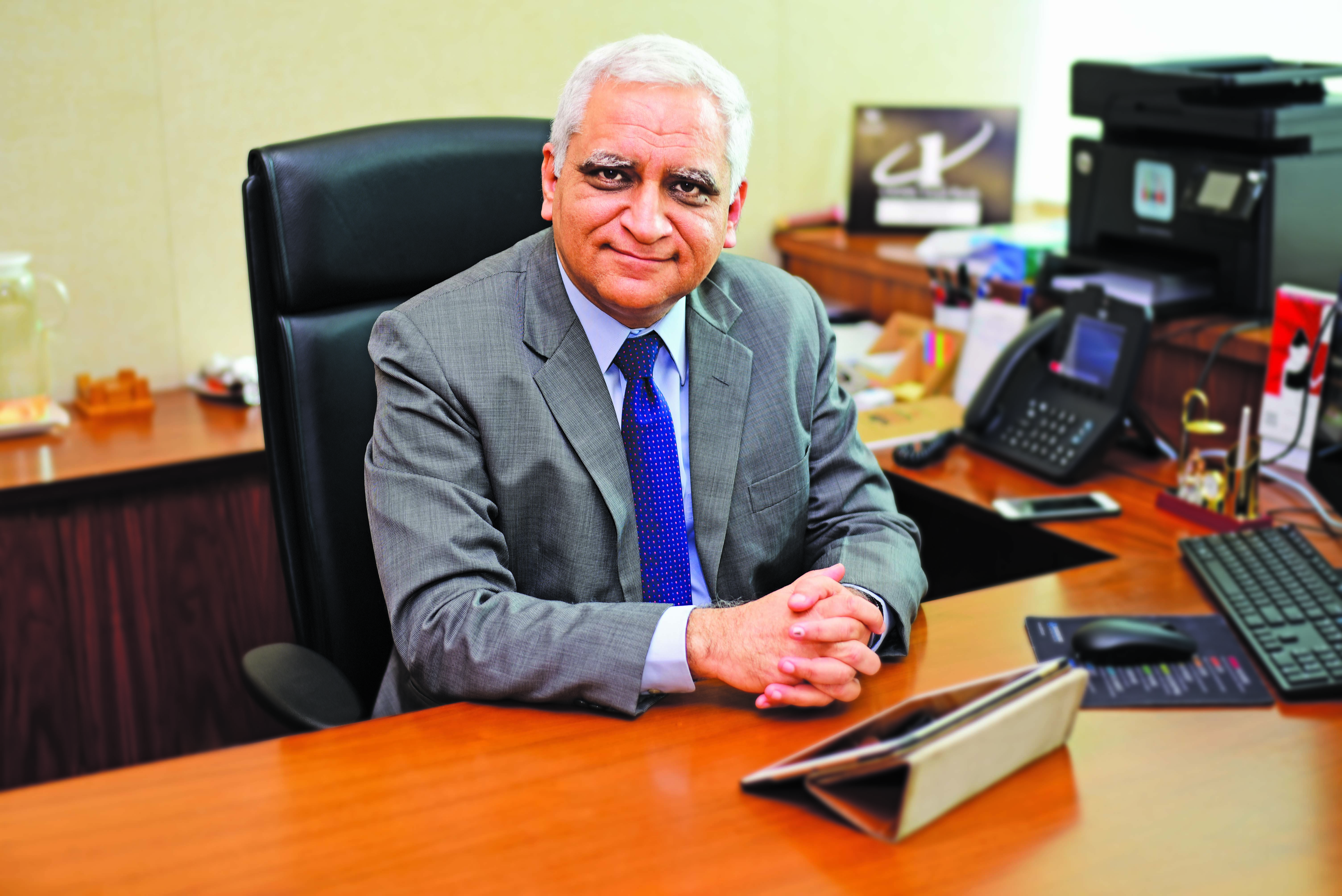SBI’s massive bad-loan cleanup paved way for record profits
Massive cleanup operation led to skeletons tumbling out of SBI’s bad loan book; also laid foundation for Rajnish Kumar’s successor Dinesh Khara to reap the harvest.
Massive cleanup operation led to skeletons tumbling out of SBI’s bad loan book; also laid foundation for Rajnish Kumar’s successor Dinesh Khara to reap the harvest.

The State Bank of India’s string of record quarterly profits has come after a massive clean-up of bad loans undertaken during the regime of Rajnish Kumar.
Kumar, who was then chairman of SBI, took the bold decision of recognising all the stress in the bank’s books instead of postponing it as he felt the unmasking would capture its true market value. Although this led to the skeletons tumbling out of the bank’s bad loan book, it laid the foundation for Kumar’s successor Dinesh Khara to reap the harvest as he announced SBI’s record profit of Rs 7,627 crore in the September quarter, up 66.73% from the year-ago period.
“I felt the need for cleaning up the non-performing assets (NPAs). This task had to be done to strengthen the bank’s future value. My target was never the P&L. The profit or the loss is only an outcome,” Kumar told Indianbankingnews.com.
Recognising non-performing loans upfront, however, wasn’t an easy step to take for the boss of the country’s largest bank as it meant drawing the red lines and declaring losses for a few quarters. But Kumar was hell-bent on the idea and nothing would make him deviate from it.
The strategy was plain and simple: SBI would align the provision for loan losses with the estimated recovery and would even go beyond the regulatory provisions. But Kumar had to manage complex factors that included getting the support of the bank’s core team and the finance ministry. He would also have to stare at the erosion of the bank’s market value.
For getting the government to back his plan, Kumar sounded out Rajiv Kumar, the then secretary of Department of Financial Services, and got the then finance minister Arun Jaitley to agree with the strategy. With SBI being a public sector bank, settling this potential point of friction was important.
Inside the bank, managing director B Sriram instantly agreed with Kumar’s plan of recognising stressed assets upfront and raising provisions to buffer the non-performing loans. Even chief financial officer Anshula Kant, who is now serving the World Bank as managing director and group CFO, stopped worrying about SBI declaring quarterly losses.
“Rajnish Kumar was upfront about asset quality. I was the deputy managing director of SBI in charge of stressed assets when all the loans of the banks were dissected for their quality. Aggressive provisions led to SBI having a provision coverage ratio of 92%, much higher than some of the private banks which just had 72% at that time,” Pallav Mohapatra, MD & CEO of Asset Reconstruction Company (India) Ltd, told Indianbankingnews.com.
Known for taking quick decisions, Kumar rewrote the pattern of several other chairmen who were keen to display their bank’s financial performance in shining light. Being keen to report non-performing loans and provide aggressively for them is not what many chairmen in public sector banks had done.
The year of the clean-up mission was 2017-18. Kumar had made up his mind to leave behind a strong legacy even if that meant reporting losses in the initial period. It was a sacrifice he was ready to take as he was confident that SBI would bounce back from reporting immediate losses.
“Far from thriving on media narratives, Rajnish Kumar believed in real work. He neither indulged in kitchen-sinking nor asked anyone in the bank to brush NPAs under the carpet during his tenure as chairman. Full credit to him for focusing on provisioning and strengthening the balance sheet. Results of his practical leadership are now getting reflected in SBI’s valuations,” said a former SBI official who worked closely with Kumar to reorganise the risk functions at the bank.
The operation clean-up led to SBI reporting a net loss of Rs 6,547 crore in FY18, the highest annual loss in its history, while the gross non-performing asset (NPA) peaked at Rs 2,23,427 crore. Quarter after quarter the bank was on a war footing to declare its NPAs, unmindful of the losses and the sharp fall in its stock price. In the fourth quarter ended 31 March 2018, SBI reported an astounding quarterly loss of Rs 7,718, its highest-ever for any quarter.
Amidst all the attack against the bank’s bad performance, Kumar was unperturbed. He was prepared to absorb all criticisms. He was silently dragging the bank out of the storm. “This is an exercise that someone at the top had to carry out. I decided to do it,” he said.
While Kumar was convinced that he was heading in the right direction, bank analysts were getting restless. A sentiment was prevailing against public sector banks at that time as those were the days when 11 of them were under the prompt corrective action (PCA) framework imposed by the Reserve Bank of India (RBI). This meant they had lending restrictions, among others, as their stressed assets ratio was of grave concern. The RBI puts banks under PCA so as to prevent further haemorrhaging of their balance sheets.
The tale of SBI’s financial performance quarter-on-quarter was being keenly observed by analysts. In the first quarter since Kumar took charge on 7 October 2017, SBI reported a massive net loss of Rs 2,416 crore. This was the bank’s first loss after 19 quarters. Standing at Rs 1,99,141 crore, the gross NPAs in the October-December 2017 period rose to 10.35% of gross advances compared to 9.83% in the preceding quarter.
“It was a shock to many people including my CFO, Anshula Kant, as well many serving and retired officers of the bank, that SBI could actually ever declare a loss. Anshula took some time to adjust to the new approach but once the bank declared a loss in third quarter ended December 2017, she was emboldened and stopped worrying about the quarterly profit and loss statement,” Kumar writes in his book ‘The Custodian of Trust’.
The losses would continue all through that financial year as non-performing loans were identified at a frenetic pace. The fourth quarter loss was the highest at 7,718 crore. “There was nothing to hide. If there was stress, we better recognise it,” said Kumar.
At SBI, another asset quality review took place. “The only difference this time was that it was being initiated from within by the then chairman Rajnish Kumar who believed that no stress should be hidden. He took it upon himself to clean up the books. Now it is incumbent on the present management to steer clear of risky assets,” said an insider who worked closely with Kumar.
SBI’s watershed year of losses in FY18 came after the bank had reported record profits under the stewardship of Arundhati Bhattacharya, the immediate predecessor of Kumar. For the financial year 2015-16, the bank declared a net profit of Rs 9,951 crore while NPA additions stood at 64,198 crore. This was bettered in the next financial year, with SBI recording net profit of Rs 10,484 crore while fresh slippage was at just Rs 39,071 crore.
Kumar did not mind such comparisons. He had set himself a goal and he knew he would achieve it. As he said, the year of losses would pave the path for “hope” and “happiness”.
The first quarter of FY19, however, continued to be elusive. The bank posted a net loss of Rs 4,876 crore in the Aril-June 2018 period. Then came the turnaround and SBI reported a modest profit of Rs 945 crore in the fiscal second quarter ended September even as the slippage ratio declined by 159 basis points year-on-year. In the next quarter, the profit widened to Rs 3,955 crore while the slippage ratio fell 459 bps year-on-year.
The bank started surprising analysts with higher profits and lower NPAs. The sacrifices Kumar made in the early part of his innings as chairman in 2017-18 was beginning to pay off. Then came the year of “happiness”, as Kumar would proudly say, when the bank reported its highest-ever yearly net profit of Rs 14,488 crore in FY20, despite the pandemic having struck the country.
“So this is the highest-ever annual profit recorded by SBI at Rs 14,488 crore and this has come in I would say not so easy circumstances because of Covid-19 and also slower growth of the economy,” Rajnish would tell analysts in a conference call at the end FY20.
The strategy adopted by Kumar is continuing even in Khara’s tenure as chairman. In the second quarter of the current fiscal, Khara has kept high capital buffers for loans that went sour. An example of that is Srei Infrastructure where SBI’s exposure of Rs 2,000 crore has been fully provided for. Despite the RBI giving a five-year window, SBI has also fully provided for the pension liability.

“In 2017-18, the bank reported record losses but we were cleaning up our books. The aim was to achieve a strong balance sheet, stable margins and sustainable profits. We have continued with the aggressive provisioning strategy and have fully provided for our liabilities even in the quarter ended 30 September, 2021. We did a lot of aggressive recognition of stress in our books and reorganised the corporate accounts group. We ensure the asset quality of loans with prudent risk mitigation methods,” said SBI managing director Ashwani Bhatia.
Even outside SBI, recognition is spreading of the top public sector bank’s ability to manage asset quality in tough periods. “SBI’s asset quality in a pandemic year has been better than the private banks. It has gained market share over the past decade. The asset quality is in line with the top private banks and the restructuring numbers is also lower,” CLSA said in a recent note.
“Gross slippages at Rs 43 billion (18 bps of loans) were much better than our expectation; including recovery/upgrade of Rs 74 billion, there was a net recovery, leading to +40 basis points improvement in gross NPAs QoQ. Restructuring 2.0 in 1HFY22 at Rs173 billion (0.7% of loans) has been in-line with the restructuring of top private banks, and overall restructured book at Rs 300 billion (1.2% of loans) is much better than PSU peers. Sectoral slippages indicate corporate book is heading to negligible credit costs; even retail NPAs have normalised after the 1Q22 spike. We reduce our credit cost assumption to 95-100 bps, and with current trends, credit costs may undershoot our estimates,” CLSA added.
For much of this improvement, the foundation was laid by Kumar. “I am glad that the thinking is being carried forward. Never postpone an issue for the future,” the former SBI chairman sums up.
